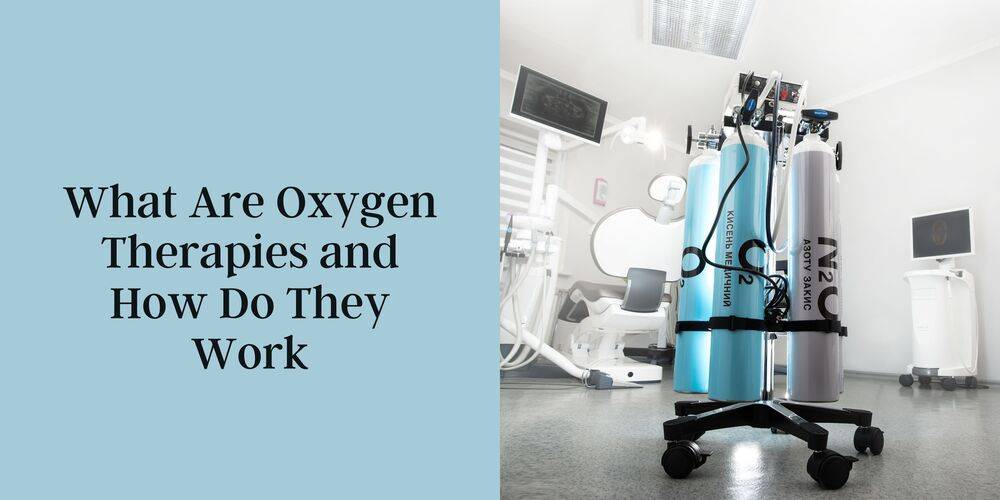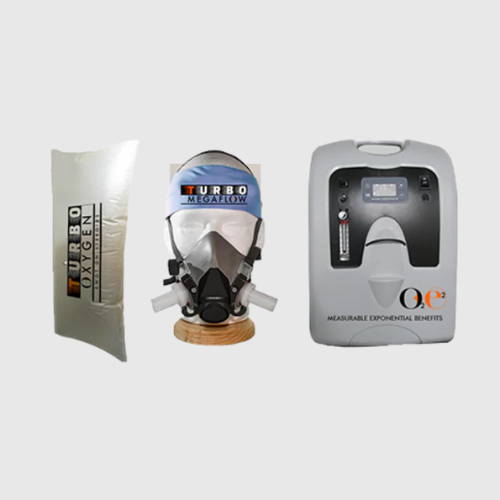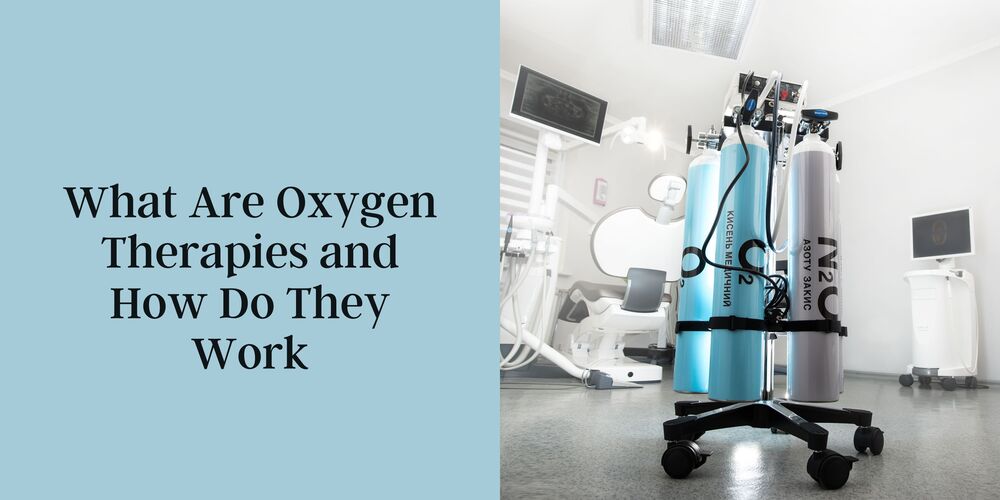¿Qué son las terapias de oxígeno y cómo funcionan?
¿Qué son las terapias de oxígeno y cómo funcionan?
26 de septiembre de 2023, por Michael Grant White
Las terapias con oxígeno están diseñadas para proporcionar más O2 al cuerpo para promover la curación y la salud. Obtenga más información sobre la terapia con O2 y cómo funciona.

Terapias de oxígeno
Las terapias con oxígeno se utilizan para proporcionar más oxígeno al cuerpo con el fin de promover la curación y la salud. Pueden actuar sobre el organismo de dos formas. La primera es suplementando el oxígeno del cuerpo. Esto es oxigenación.
El segundo es donde las moléculas de oxígeno adicionales pueden reaccionar libremente con otra molécula de "radical libre". Cuando reacciona a moléculas de radicales libres como toxinas o patógenos, por ejemplo, las destruirá u "oxidará". Algunas oxigenoterapias oxigenan el cuerpo; otros funcionan por oxidación. El ozono (O3) hace ambas cosas.
¿Qué terapias de oxígeno existen?
El médico suele recetar oxígeno puro a pacientes con enfermedades pulmonares crónicas. Se inhala a través de un tubo o una máscara extraída de un tanque. Suministra no sólo el habitual 20,08 % de oxígeno del aire, sino también el 100 % de oxígeno, lo que aumenta las reservas de oxígeno del cuerpo.
Esto es muy necesario para aquellos cuya capacidad pulmonar está disminuida. La oxigenoterapia pura también puede aliviar la fatiga y los dolores de cabeza y aumentar la energía. También puede estimular las células y hacerlas mucho más fuertes.
Dependiendo demasiado del oxígeno suplementario
El antiguo axioma de que "si no lo usas, lo pierdes" me hace sospechar que el uso de oxígeno "concentrado" embotellado evita muchos enlaces naturales en el sistema respiratorio total. De esta manera, creo que puede debilitar la capacidad natural del cuerpo para ingerir y absorber oxígeno.
Recomiendo encarecidamente que, siempre que sea posible, se capacite a las personas para respirar mejor durante el uso de oxígeno a alta presión. También es costoso e ineficiente en comparación con una mejor respiración, pero puede ser absolutamente necesario y sustenta la vida. Entonces parece muy aconsejable combinar la oxigenoterapia suplementaria con ejercicio.
Terapia de oxígeno hiperbárico (TOHB)
TOHB es oxígeno puro administrado en condiciones presurizadas, como una cámara de descompresión para buceadores submarinos. Se coloca a una persona dentro de un tanque sellado para varias personas o un tubo largo "similar a un ataúd", se baja a una profundidad efectiva presurizada de 30 pies bajo el agua y se respira oxígeno puro durante treinta a sesenta minutos.
Debido a la alta presión, el oxígeno ingresa al cuerpo y viaja a los tejidos privados de oxígeno. Incluso la médula ósea se satura.
La terapia de oxígeno hiperbárico normalmente se administra en una clínica u hospital y se usa para tratar gangrena, intoxicación por monóxido de carbono, inhalación de humo, lesiones y heridas traumáticas, víctimas de accidentes cerebrovasculares y ataques cardíacos, y personas con esclerosis múltiple y SIDA.
Ozono
Los medios de comunicación generalmente consideran que el ozono es “smog”, pero esta es una definición inexacta. El ozono, un gas transparente formado por tres átomos de oxígeno, se forma cuando el oxígeno y la luz ultravioleta interactúan en lo alto de la estratosfera.
El oxígeno asciende continuamente a la atmósfera superior hasta donde se encuentra la capa de ozono. Allí el sol transforma el O2 en O3 u ozono. El uso de los rayos ultravioleta para crear ozono es la forma en que la capa de ozono nos protege de sus efectos nocivos. Al ser más pesado que el oxígeno, este ozono recién creado vuelve a la tierra, donde cede un átomo de oxígeno y vuelve a convertirse en O2, purificando nuestra agua y aire y descomponiendo bacterias, mohos y hongos.
Es el olor fresco de la ropa secada al aire libre, el aire fresco de la orilla del mar o el olor fresco después de una tormenta eléctrica. Cuando el ozono se combina con las sustancias químicas tóxicas de la atmósfera inferior, se convierte en una pequeña parte del brumoso smog marrón de gases tóxicos que se puede ver. Si bien el ozono es simplemente oxígeno activado puro y tiene muchos beneficios útiles, el smog es tóxico para el cuerpo humano.
El ozono de grado médico se produce haciendo pasar oxígeno puro a través de una fuente de luz ultravioleta o un arco eléctrico. En estas reacciones, sólo un pequeño porcentaje de oxígeno (del 1 al 5 por ciento) se convierte en ozono.
Cuando se administra ozono al cuerpo, su tercer átomo de oxígeno inestable se divide fácilmente y se adhiere a bacterias, hongos, moho, parásitos y tumores, y en el proceso de hacerlo, los oxida o destruye.
La molécula de oxígeno estable agrega el oxígeno necesario al cuerpo y tiene un PH alto de entre 7 y 9, necesario para equilibrar un cuerpo no saludable. Cuando se utiliza correctamente, el ozono es excepcionalmente seguro. El ozono se administra mediante goteo intravenoso, inyecciones, aplicaciones rectales y vaginales y aplicaciones tópicas.
Peróxido de hidrógeno
El peróxido de hidrógeno es un líquido inestable formado por dos átomos de hidrógeno y dos átomos de oxígeno, que se descompone fácilmente en agua y oxígeno. Cuando el agua interactúa con el ozono en la atmósfera, se produce peróxido de hidrógeno.
Se encuentra en algunos de nuestros alimentos y agua y es producido por células de nuestro cuerpo. El peróxido de hidrógeno es un oxidante fuerte que mata los patógenos al contacto. Muchos de nosotros hemos visto espuma de peróxido de hidrógeno al 3%, ya que mata las bacterias en una herida pequeña.
Además de su uso tópico como desinfectante, el peróxido de hidrógeno de calidad alimentaria se usa por vía oral e intravenosa para matar patógenos, generalmente supervisado y administrado por un profesional de la salud capacitado.
Estrés oxidativo
El estrés oxidativo describe el daño celular causado por un exceso de oxidantes, incluidas las especies reactivas de oxígeno (ROS). Los dos tipos de ROS son los radicales libres y las especies de oxígeno activado.
Las ROS son dañinas en exceso, pero algunos niveles de ellas son necesarias para funciones celulares importantes. Por ejemplo, el oxígeno singlete, que es una especie de oxígeno activado, participa en la señalización celular que desencadena el sistema de respuesta oxidativa dentro de las células.
Las ROS y el estrés oxidativo causan envejecimiento, así como muchas enfermedades y trastornos, que incluyen:
-
Enfermedades autoinmunes
-
enfermedad de Huntington
Respuesta oxidativa
La defensa celular contra el Estrés Oxidativo es la Respuesta Oxidativa. El Sistema de Respuesta Oxidativa (o sistema de respuesta celular) protege y repara el daño del estrés oxidativo. Esto se logra principalmente mediante la producción de enzimas y coenzimas.
La respuesta oxidativa se inicia mediante secuencias de transducción de señales inducidas por oxígeno singlete. El oxígeno singlete es una especie de oxígeno activado, pero no un radical libre. Luego, las proteínas de señalización desencadenan la respuesta celular.
Los resultados de la respuesta celular incluyen, entre otros:
Para un metabolismo celular óptimo, son esenciales una fuerte respuesta oxidativa y un bajo estrés oxidativo.

Sistema turbo de oxígeno
El último sistema EWOT en acondicionamiento corporal y autocuración
¿Qué condiciones o enfermedades se pueden ayudar con la oxigenoterapia?
Casi todas las bacterias, gérmenes, virus, hongos y parásitos nocivos para la salud son anaeróbicos y no pueden sobrevivir en altas concentraciones de oxígeno.
Se ha demostrado que las terapias con oxígeno son eficaces en el tratamiento de muchas afecciones de salud, incluidas varias enfermedades infecciosas, cáncer, problemas respiratorios, afecciones cardíacas, enfermedades ambientales, esclerosis múltiple, afecciones de la piel y enfermedades oculares.
1. Cáncer
Las terapias con oxígeno tienen un gran potencial en el tratamiento del cáncer. Ya en 1931, el Dr. Otto Warburg ganó el Premio Nobel por su trabajo sobre las causas de que las células se vuelvan cancerosas .
“El cáncer tiene sólo una causa principal. La causa principal del cáncer es la sustitución de la respiración normal de oxígeno de las células del cuerpo por la respiración celular anaeróbica (carente de oxígeno)”.
Es bien sabido que las células cancerosas prosperan en condiciones de poco oxígeno y alta acidez.
2. Condiciones del corazón
El corazón sufre espasmos en gran parte debido a la falta de oxígeno. Cuanto mejor es la respiración, más oxígeno hay y menos tiene que trabajar el corazón.
3. Enfermedades respiratorias
Cuando se usan con cuidado, los purificadores de aire con ozono son un verdadero impulso para quienes padecen debilidades respiratorias y alergias ambientales.
Los estudios de investigación han demostrado que el ozono y el peróxido de hidrógeno no respirados tienen éxito en el tratamiento del asma, la neumonía, la bronquitis, la gripe y el enfisema. Muchos pacientes con enfermedades respiratorias crónicas responden rápidamente a la terapia, a menudo en dos o tres tratamientos.
Puede ser extremadamente beneficioso pero costoso e ineficaz en comparación con una respiración óptima.
4. Enfermedades bacterianas
El ozono es capaz de destruir muchos tipos de bacterias. Produce peróxidos dentro del cuerpo, que destruyen la membrana celular de las bacterias pero no afectan las células sanas. Experimentos científicos han demostrado que la E. Coli se destruye completamente después de un minuto de exposición a una solución de ozono.
Experimentos similares han demostrado una reducción de estafilococos, estreptococos y Mycobacterium tuberculosis. Debido a que recientemente se ha demostrado que muchas cepas de bacterias son resistentes a los antibióticos, la oxigenoterapia puede ofrecer una alternativa eficaz.
5. Enfermedades virales
Los antibióticos aún no son eficaces en las infecciones virales. Las terapias con oxígeno han demostrado ser exitosas. Algunas de las enfermedades causadas por virus son la gripe, las paperas, el sarampión, la polio, el herpes, el SIDA y la hepatitis.
El ozono puede destruir la capa proteica de la pared celular del virus y, una vez dentro, puede alterar su ADN. Los estudios han demostrado que el ozono inactiva entre el 97 y el 100 por ciento del virus del VIH. Consulte PubMed y Family News para obtener más información sobre esto.
6. Infecciones por hongos
Está bien documentado el uso de ozono y peróxido de hidrógeno para tratar eficazmente el hongo parásito Candida albicans. La cándida, que normalmente vive en equilibrio con el tracto intestinal, puede propagarse por todo el cuerpo y debilitar todo el sistema inmunológico a medida que se transforma de levadura a parásito fúngico.
Médicos experimentados han utilizado peróxido de hidrógeno y ozono por vía intravenosa para tratar con éxito a los pacientes con Candida. La dieta también es fundamental y es el mejor enfoque a largo plazo.
7. Infecciones parasitarias
Los estudios sobre el uso eficaz del ozono y el peróxido de hidrógeno para destruir parásitos han tenido mucho éxito. Los parásitos de la malaria fueron eliminados incluso con concentraciones mínimas de peróxido de hidrógeno en estudios con animales y de laboratorio.
En un estudio sobre Giardia lamblia, un parásito que puede infestar el tracto intestinal y causar síntomas graves de diarrea, náuseas y calambres, a los pacientes se les dio agua o aceite ozonizado. La reducción de los síntomas fue muy exitosa: 97,5% para cada grupo.
La introducción de ozono y peróxido de hidrógeno en el cuerpo a menudo provoca la degradación de las células cancerosas. El peróxido puede oxidar la célula cancerosa. En estudios con animales, el ozono ha revertido con éxito los cánceres. En el laboratorio, se demostró que el ozono inhibe el crecimiento de células cancerosas, sin afectar a las células normales.
En la práctica clínica, los médicos de Medicina Alternativa Complementaria (CAM), que tratan una variedad de tumores, así como melanoma, sarcoma y leucemia, utilizan el ozono como parte de su tratamiento contra el cáncer. No sólo se reducen los tumores, sino que también se mejora la vitalidad y la calidad de vida.
La mejor oxigenoterapia
Respirar mejor es la forma principal, más fácil, más económica y más efectiva de obtener el oxígeno adecuado, incluso mientras duerme. La gran mayoría respira a aproximadamente el 30% de su capacidad.
Le sugiero encarecidamente que aprenda a respirar de manera óptima antes de gastar muchos dólares posiblemente innecesarios en costosas terapias de oxígeno. En problemas de salud graves o situaciones que pongan en peligro la vida, aprenda a respirar de manera óptima durante las terapias mencionadas anteriormente.




